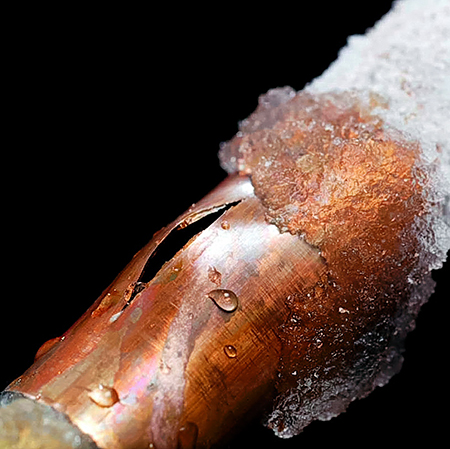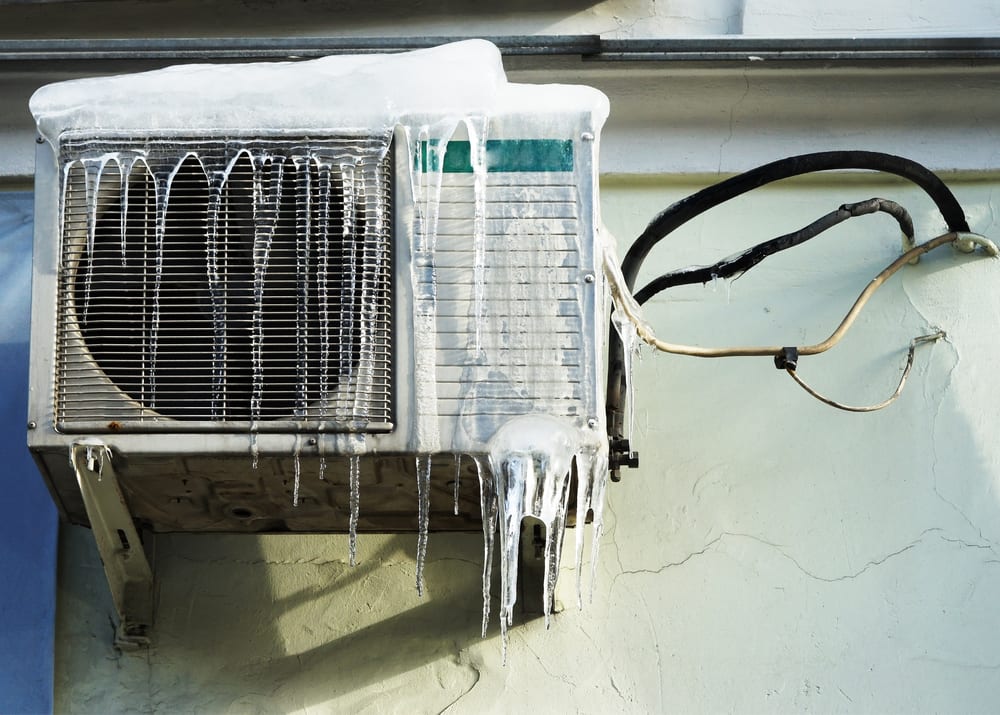Ways to Deal with a Frozen AC Pipe: Professional Advice
Ways to Deal with a Frozen AC Pipe: Professional Advice
Blog Article
What are your ideas concerning Air Conditioner Frozen? How To Fix your Frozen AC Line?

Intro
Finding that your AC pipe is frozen can be worrying, specifically during warm summertime when you count on your air conditioning unit one of the most. Understanding what to do in such a circumstance is crucial to prevent further damage to your cooling system and guarantee your comfort inside your home.
Comprehending the Causes
A number of factors can add to the freezing of an a/c pipeline. Comprehending these reasons can help you deal with the concern successfully.
Absence of Airflow
One usual cause of a frozen air conditioner pipe is inadequate airflow. When the airflow over the evaporator coil is restricted, it can cause the coil to drop below freezing temperature level, bring about ice development on the pipe.
Reduced Refrigerant Levels
Not enough cooling agent levels in your AC system can additionally result in an icy pipeline. Low cooling agent levels can create the pressure in the system to go down, resulting in the cold of wetness on the evaporator coil.
Winter Conditions
In chillier environments, freezing temperatures outside can add to the cold of air conditioning pipelines. If your air conditioner unit is not appropriately insulated or if there are leakages in the ductwork, chilly air can infiltrate the system, causing the pipeline to ice up.
Dirty Air Filters
Dirty or clogged air filters can limit airflow in your air conditioner system, bring about various issues, consisting of an icy pipeline. It's essential to replace or clean your air filterings system consistently to make certain correct air movement and stop ice build-up.
Indications of a Frozen Air Conditioning Pipe
Recognizing the indicators of an icy AC pipeline is critical for prompt activity.
Minimized Airflow
If you see a substantial decrease in air movement from your vents, it might indicate an icy pipeline.
Ice Buildup on the Pipe
Visible ice build-up on the refrigerant line or the evaporator coil is a clear sign of a frozen air conditioner pipe.
Odd Sounds from the Unit
Unusual noises, such as hissing or gurgling, coming from your air conditioning system can signal that there's ice present on the pipe.
Immediate Actions to Take
When confronted with an icy AC pipe, it's important to act promptly to prevent further damage to your cooling system.
Shutting off the a/c
The very first step is to switch off your ac unit to avoid the system from running and intensifying the issue.
Looking for Blockages
Evaluate the location around the indoor unit for any type of blockages that may be blocking air movement, such as furniture or drapes.
Defrosting the Pipe
You can use mild techniques like placing towels soaked in warm water around the frozen pipeline to assist thaw it slowly.
Safety nets
Taking preventive measures can aid prevent future occurrences of an icy air conditioning pipeline.
When DIY Methods Fail
If your attempts to thaw the pipeline or address other concerns are unsuccessful, it's time to call an expert.
Relevance of Hiring a Professional HVAC Technician
A certified HVAC professional has the competence and devices necessary to diagnose and repair problems with your air conditioner system safely and efficiently.
Routine Maintenance Checks
Arrange normal upkeep get in touch with a professional HVAC technician to guarantee that your air conditioning system is running efficiently.
Altering Air Filters
On a regular basis change or clean your air filters to prevent air movement constraints and preserve optimal performance.
Shielding Exposed Pipes
If your a/c pipes are exposed to cool temperature levels, consider shielding them to prevent freezing throughout cold weather.
Seeking Professional Help
If DIY techniques fall short to deal with the problem or if you're unclear regarding just how to continue, it's best to look for aid from a qualified HVAC specialist.
Verdict
Handling an icy a/c pipeline can be a discouraging experience, yet knowing exactly how to react can aid minimize damage and bring back comfort to your home. By recognizing the reasons, identifying the indicators, and taking punctual activity, you can effectively deal with the issue and avoid future occurrences.
Frozen AC Line: Why It Happens & What To Do About It
A frozen AC line can be a rather peculiar sight in a place like Phoenix, Arizona where nothing ever freezes. In this post, we’ll discuss what makes an air conditioner line frozen – and what you can do about it.
Dirty Air Filters
Did you know that you should be cleaning or replacing your air filters on a monthly basis? Failing to do this can result in airflow issues that, in turn, cause your evaporator coils and lines to freeze over. You’ll notice a buildup of ice on both components, although the buildup on your pipes will, of course, be more evident unless you open your air condition up to reveal the coils.
What To Do About It
Give your air filter a good cleaning if it’s reusable. If not, replace the filter outright. Next, switch your air conditioner’s fan setting on and leave it there for 2-3 hours. This will draw warm air in, helping to thaw your evaporator coil. You can also check out this article for some tips on cleaning the coils themselves if you’d like to speed the process up. Before you switch the unit back to its normal state, make sure the supply vents are completely unobstructed and free of dust or other debris.
If you keep having this issue even after replacing your filters regularly, contact a local HVAC repair company and have them inspect your evaporator coil, ductwork, and any other components that may be at fault. If you live in the Phoenix, Arizona area, give American Home Water and Air a call.
Low Refrigerant Levels/Leakage
What To Do About It
Contrary to what air conditioner “recharge” companies often tell their clients about refrigerant, it should never need to be simply refilled. You see, refrigerant runs in what experts refer to as a “closed loop.” Refrigerant really shouldn’t be leaving that loop. If it is, you’ve got a leak.
Paying someone to come and pump more refrigerant into your system (aka “recharge” it) isn’t the solution. Doing that will simply kick the can down the road. Besides, refrigerant leaks can be harmful to the environment and people in your home.
Rather, you need to take care of the leak with the help of a technician. Check out this article for some more information about dealing with air conditioners that are leaking refrigerant. Before you contact a technician, switch your thermostat to the off position. Then, switch the fan setting on and let it run for 2-3 hours so the unit can thaw.
Improper Temperature Setting
Improper temperature settings can also cause a drop in your air conditioner’s pressure. What many people don’t realize is that air conditioners are actually designed to run when temperatures have fallen above roughly 60 degrees Fahrenheit. If you run the unit when it’s cold outside, you’ll run into many issues, including frozen components.

As an enthusiastic person who reads on What Causes AC Pipes To Freeze?, I was thinking sharing that information was sensible. Loved our write up? Please share it. Let another person check it out. Thanks so much for taking the time to read it.
Click Here Report this page